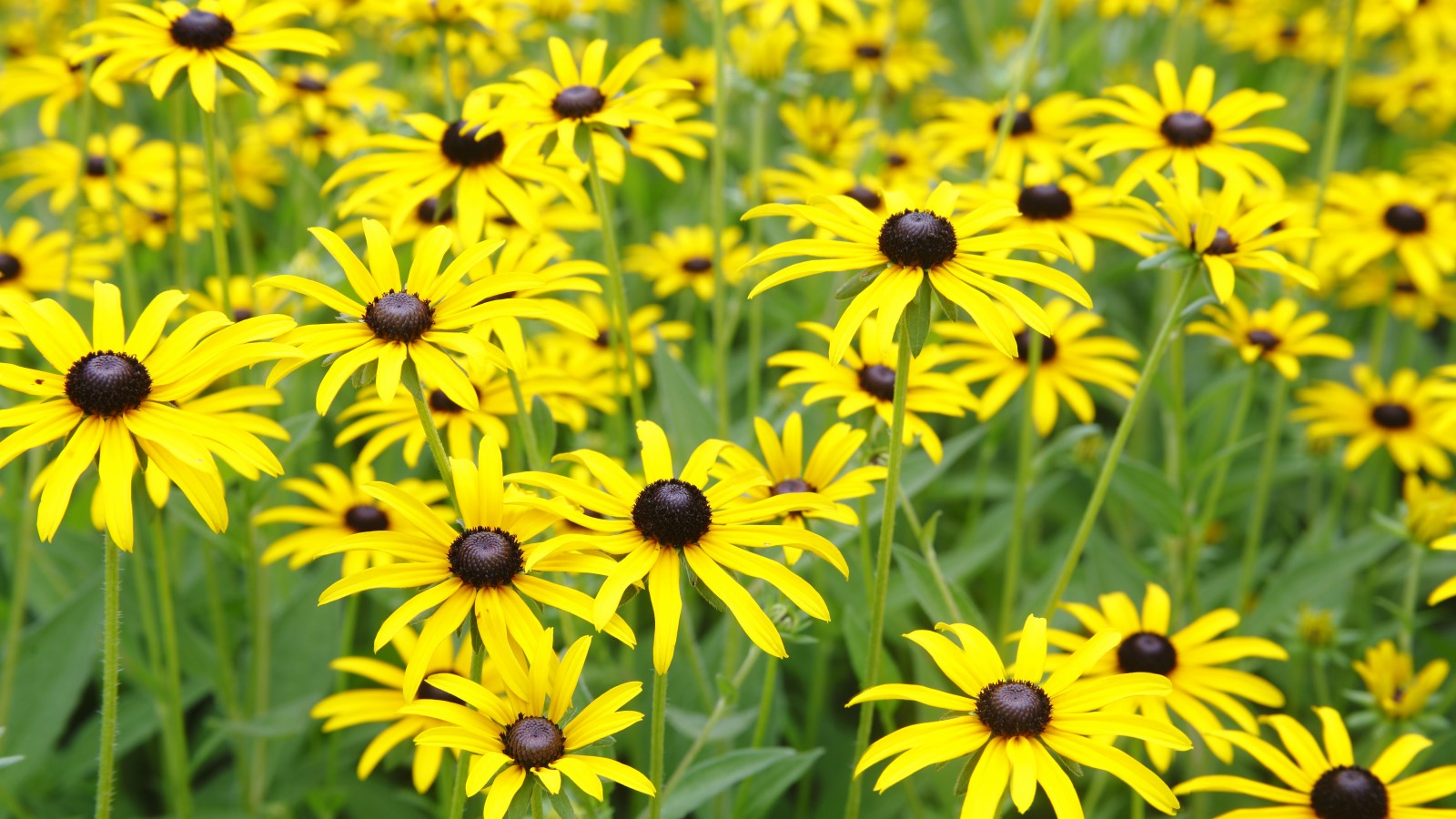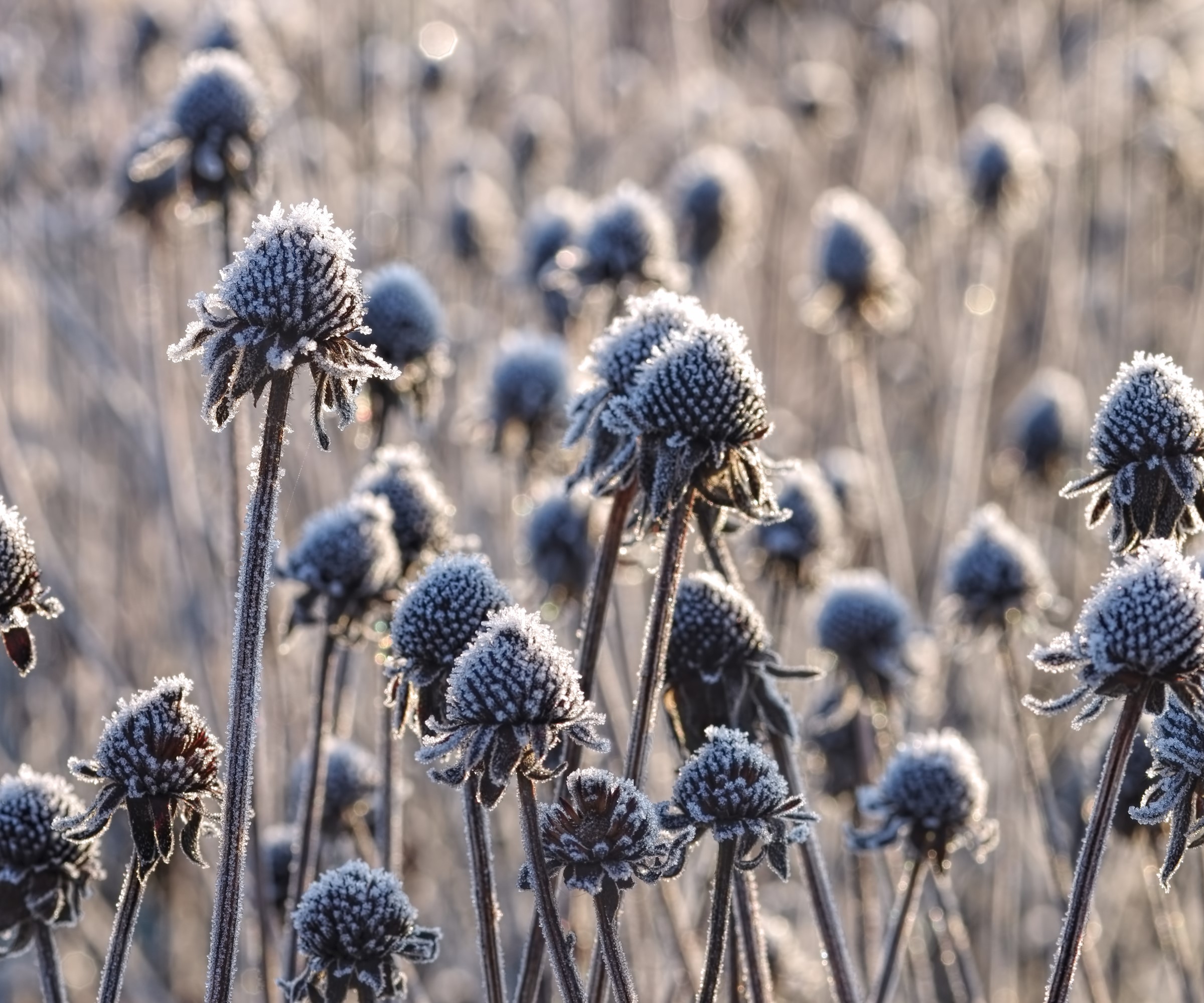When to cut back black eyed Susans – the experts are split on the best time
Whether you cut back in fall or spring may depend on your type of garden


Black eyed Susans are so-called for the plant’s dark central head and they can bloom for a long period of time through summer and fall. They are also commonly known as rudbeckia and come in a range of annual or perennial forms.
If you are growing perennial types, then you will need to cut back black eyed Susans come the end of their blooming period. When growing rudbeckia you can either cut them back come fall or spring, depending on your preference.
No matter which option you choose, and it may depend on the style of your backyard, the process is thankfully a simple one. We take a look at the advantages and disadvantages of each to help you decide when to cut back black eyed Susans in your garden.
When is the best time to cut back black eyed Susans?

Black eyed Susan flowers come in shades of yellow, orange, and red
Black eyed Susans have a long blooming season and can flower all the way from midsummer through until the first frosts. With deadheading, this flowering season can be extended as it will stop the plant going to seed and divert its energy back into producing and opening new flower buds. These bright and simple-to-grow plants do have fantastic flowers that attract bees, pollinators, and other beneficial insects into a space and are worthy of a place in any sunny flower bed, border, or container garden.
The blooming period will come to an end in fall and then the decision comes for when to cut back black eyed Susans. There are two options for when to get out the pruning shears, either to cut them back for winter in the fall or wait until the following spring.
Quinten O’Dea, a professional landscaper, says: ‘the best time to cut back black eyed Susans is in the fall’. He adds: ‘The flower benefits from a strong perennial root system that can withstand trauma and pruning easily. In late summer or fall, cut back these plants at their base, when they've browned a bit and lost their flower petals.
‘It is difficult to cut these back at the wrong time; their hardiness will have them coming back until they are pulled out of the ground completely.’
Cutting back plants in the fall helps to tidy and neaten the garden for winter, while removing the seed heads will prevent black eyed Susans self-seeding all over the garden – something they are famed for doing.
The alternative is to leave the plants in situ over winter. Louise Curley, gardens expert, explains how, when the flowers start to fade on black eyed Susans, the central cone remains in place and this can make an attractive and wildlife-friendly feature in a winter garden.
She says, 'If the seedheads are left to stand over winter birds such as goldfinches will eat the seeds. These provide attractive fall and winter structure, particularly when they’re dusted with frost.’
While seed heads in winter can be useful as part of wildlife garden ideas, it likely will mean the plant reseeding around the garden. Some people may be put off by this, however others may not mind extra plants for free or be undeterred if they have a looser and wilder style of backyard ideas. Fear not, however, as if a clump does get too big it is simple to lift and divide plants in spring.

Quinten O’Dea is a professional landscaper with over 13 years of experiencecompleting quality projects. His company Q&A Landscaping has been planting flowers, shrubs and trees for over a decade now throughout the Pittsburgh area.
How far should you cut down black eyed Susans?

Seed heads left over winter can be a food source for birds
It is important to use clean and sharp pruning shears when cutting back plants, as clean garden tools prevent damaging the plant and spreading diseases around the garden. A pocket sharpener, such as this garden tool sharpener available at Walmart, is a useful piece of kit to help you keep tools sharp while out working in the garden.
Cutting back black eyed Susans is a simple process and the aim is to trim all the stems to a height of around 4-6 inches above the ground. This removes all of the spent flower stems and also most of the plant’s foliage. If you are cutting back the plants for winter, then leaving a few inches of material at the plant’s base will help to protect the crown from the worst of the winter weather.
Zahid Adnan, gardener and founder of The Plant Bible, recommends that a ‘light feeding’ in spring after cutting back the plants can be beneficial too. He says: ‘You can apply a balanced, slow-release fertilizer around the base of the plants. This will help replenish nutrients in the soil and support the plant's growth during the next growing season. Just be careful not to over-fertilize, as this can lead to excessive leaf growth at the expense of flower production.’
An example of a balanced, slow-release fertilizer that would fit the expert's recommendation is the Expert Gardener Flower Plant Food also available at Walmart.

Zahid Adnan is the Founder and Editor of The Plant Bible, as well as managing a plot of 10-hectare agricultural land. He is also involved in a project to develop sustainable urban farming practices by utilizing farming technologies to increase food production and reduce environmental impacts.
FAQs
Should I deadhead black eyed Susans?
While deadheading is not an essential task, it is recommended to deadhead black eyed Susans to give yourself the longest blooming period possible. Once a bloom has started fading, cut the stem back to just above a leaf node. Avoid the deadheading mistake of cutting too far down a stem, as this can leave a bare stem with no foliage or blooms. Regularly removing faded blooms will tidy the plant, stop it seeding around the yard, and ensure the energy goes back into producing new flowers.
Black-eyed Susans are also a good option when planning a cut flower garden. The blooms are prevalent come late summer and their deep colors work fantastically in displays. If you are looking for cutting garden flowers that have a distinctive appearance and long vase life, then black-eyed Susans are well worth consideration.
Sign up to the Homes & Gardens newsletter
Design expertise in your inbox – from inspiring decorating ideas and beautiful celebrity homes to practical gardening advice and shopping round-ups.

Drew’s passion for gardening started with growing vegetables and salad in raised beds in a small urban terrace garden. He has worked as a professional gardener in historic gardens and specialises in growing vegetables, fruit, herbs, and cut flowers as a kitchen gardener. That passion for growing extends to being an allotmenteer, garden blogger, and producing how-to gardening guides for websites. Drew was shortlisted for the New Talent of the Year award at the 2023 Garden Media Guild Awards.
-
 5 surprising but brilliant ways to clean with old socks – from perfectly buffing stainless steel to deterring pests naturally and more
5 surprising but brilliant ways to clean with old socks – from perfectly buffing stainless steel to deterring pests naturally and moreTackle dust in tricky corners, clean your mirrors and even banish bad odors with those rogue single socks
By Andy van Terheyden Published
-
 How to grow astilbe – expert advice on cultivating this shade-tolerant flowering perennial
How to grow astilbe – expert advice on cultivating this shade-tolerant flowering perennialShade-tolerant and pest-resistant - astilbe are hardy and tough perennials that can thrive in many settings
By Ellen Wells Published